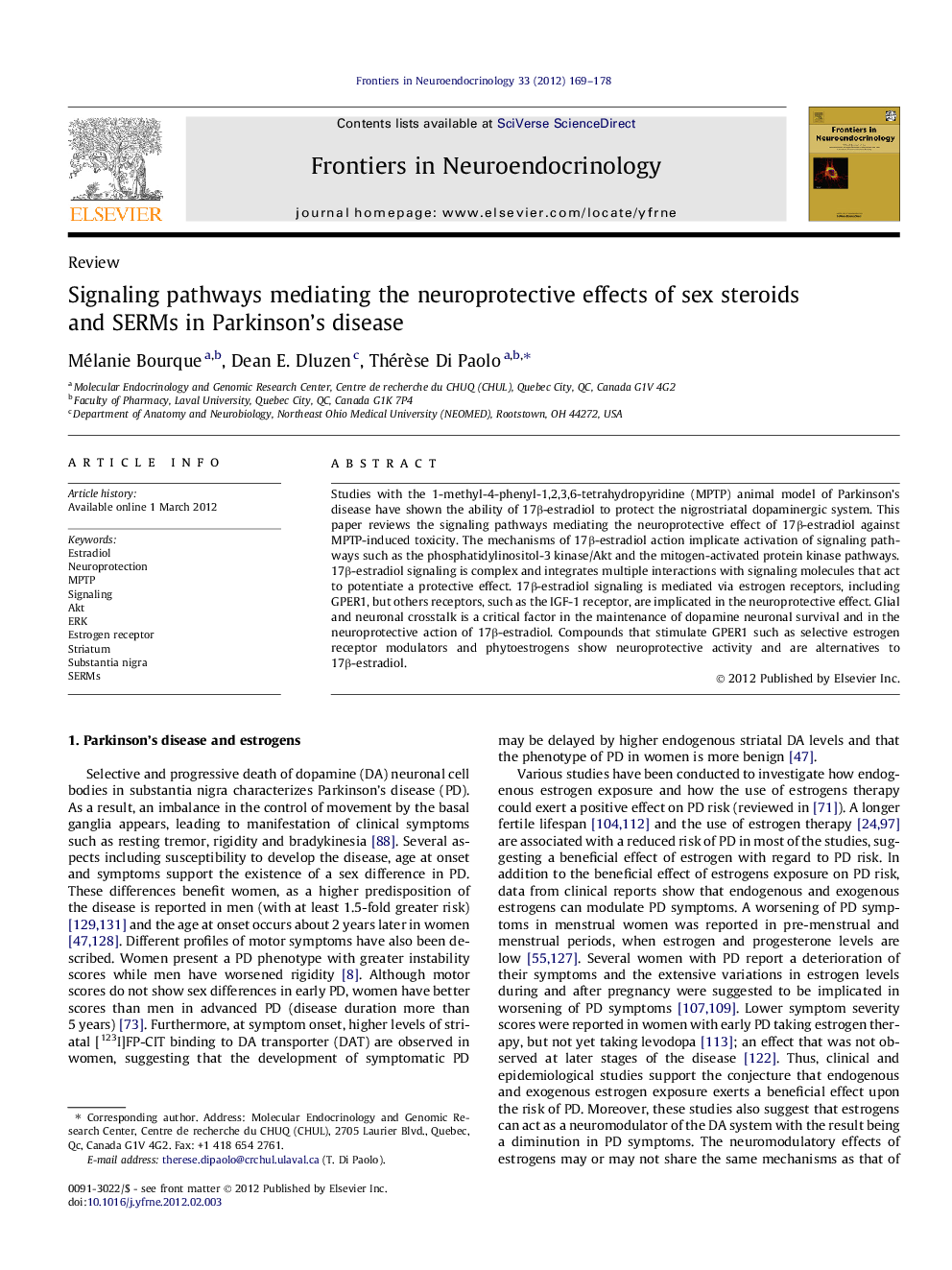| Article ID | Journal | Published Year | Pages | File Type |
|---|---|---|---|---|
| 2799326 | Frontiers in Neuroendocrinology | 2012 | 10 Pages |
Studies with the 1-methyl-4-phenyl-1,2,3,6-tetrahydropyridine (MPTP) animal model of Parkinson’s disease have shown the ability of 17β-estradiol to protect the nigrostriatal dopaminergic system. This paper reviews the signaling pathways mediating the neuroprotective effect of 17β-estradiol against MPTP-induced toxicity. The mechanisms of 17β-estradiol action implicate activation of signaling pathways such as the phosphatidylinositol-3 kinase/Akt and the mitogen-activated protein kinase pathways. 17β-estradiol signaling is complex and integrates multiple interactions with signaling molecules that act to potentiate a protective effect. 17β-estradiol signaling is mediated via estrogen receptors, including GPER1, but others receptors, such as the IGF-1 receptor, are implicated in the neuroprotective effect. Glial and neuronal crosstalk is a critical factor in the maintenance of dopamine neuronal survival and in the neuroprotective action of 17β-estradiol. Compounds that stimulate GPER1 such as selective estrogen receptor modulators and phytoestrogens show neuroprotective activity and are alternatives to 17β-estradiol.
► Estradiol pretreatment reduces MPTP toxicity of the nigrostriatal dopamine system. ► SERM and phytoestrogen show neuroprotective effects against MPTP toxicity. ► Glial and neuron interaction is a critical factor of estradiol protective action. ► Estradiol neuroprotection requires both ERα and ERβ signaling or alternatively GPER. ► PI3K/Akt and MAPK/ERK signaling are mediators of estrogenic neuroprotection.
